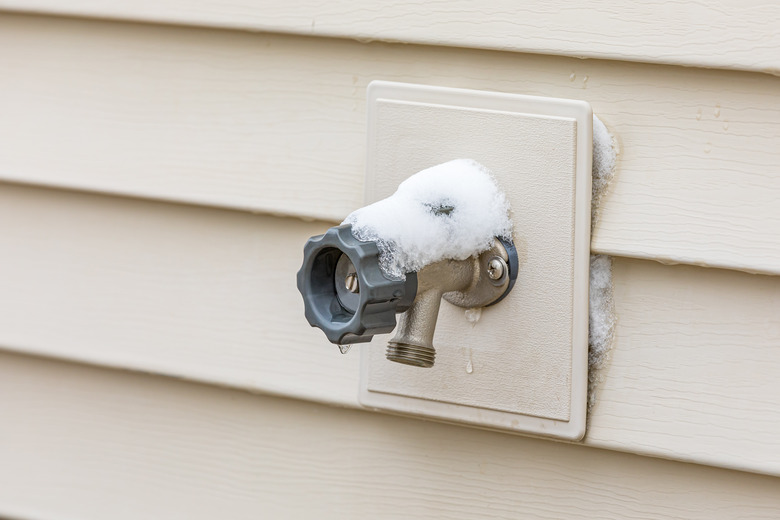How Does A Freeze-Proof Outdoor Faucet Work?
When a frigid blast from the Arctic vortex strikes your neighborhood, one of the possible outcomes is burst water pipes. Outdoor faucets are particularly vulnerable, and if one of them should burst, you could end up with a massive uncontrollable leak when the temperature warms and the water unfreezes.
A freeze-proof outdoor faucet, also known as a frost-proof outdoor faucet, is the answer. It's basically a compression-style spigot with an extra-long barrel. It's designed for installation on the side of the house. You should also replace each of your garden spigots with a freeze-proof yard hydrant.
What's So Freeze Proof About a Freeze-Proof Spigot?
What's So Freeze Proof About a Freeze-Proof Spigot?
A freeze-proof spigot, also called an antifreeze spigot, employs the same design but with one important difference. It's attached to a tube that can be up to 24 inches long, and the compression valve is at the supply end of the tube. A long rod connects the valve to the faucet handle. The design places the water connection well inside the house, where the air is warmer and where water is unlikely to freeze.
The design of a freeze-proof yard hydrant is similar. The valve is separated from the handle by a long tube. You mount the hydrant upright and bury the water connection deep in the ground below the frost line where it can't freeze.
Parts of a Freeze-Proof Outdoor Faucet
Parts of a Freeze-Proof Outdoor Faucet
The compression valve in an antifreeze spigot works in exactly the same way as the one in a regular outdoor spigot. When you turn the handle clockwise, a screw mechanism compresses a stopper with a rubber washer onto the water inlet port to stop the water. Unscrew the handle and the valve loosens, allowing water to flow.
The faucet consists of the spout and handle, a length of 1/2- or 3/4-inch copper pipe and a male pipe tread connector. The valve mechanism includes the stopper, a replaceable rubber washer and the rod that connects the handle to the stopper.
Local codes usually require a vacuum breaker on outdoor faucets to prevent backflow and contamination of the water supply. This comes preinstalled on the spout. In addition, some local codes require a separate valve to be installed in the water system just before the faucet as an emergency shut-off option.
Installing a Frost-Free Faucet
Installing a Frost-Free Faucet
The faucet gets mounted to the siding, and it requires a hole large enough to accommodate the valve mechanism, usually 1 1/8 inches in diameter. You drill the hole, insert the tube, push it in until the faucet is flush against the siding and then secure the collar on the faucet to the siding with screws. You're now ready to make the water connection.
Prepare the water pipes by installing whatever fittings you need to make the connection. If you have galvanized steel plumbing, you'll need a dielectric union because the faucet connector is either brass or copper, and both of these will corrode if connected directly to steel.
The faucet tube should have a slight downward slope toward the spout. This guarantees that water will drain out of the spout when you turn off the water, thus ensuring there is none left in the tube to freeze. You can't do this with a frost-free hydrant because you install it vertically, so it has a sealed drain hole that allows water to drain out below the frost line.
